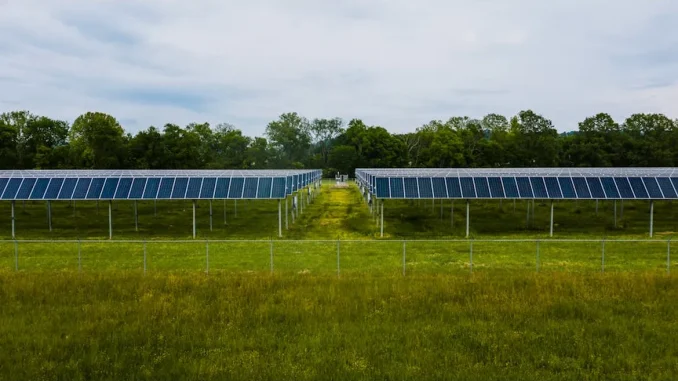
The construction sector stands on the precipice of a significant transformation, poised to be driven by the increasing adoption of Structured Insulated Panels (SIPs). These advanced panels, noted for their exceptional structural integrity, thermal resistance, and swift installation capabilities, are predicted to revolutionise building practices across the globe by 2032. Amidst the rising demand for energy-efficient buildings, SIPs distinguish themselves through their energy-saving properties, cost-efficiency, and environmentally friendly construction methods, rendering them a preferred choice for contemporary construction endeavours.
Structured Insulated Panels, far from being a transient trend, present a multifaceted solution addressing several urgent needs within the construction industry. Constructed from a rigid foam insulation core sandwiched between two layers of structural facing materials, SIPs deliver superior thermal resistance, expedited installation times, and enhanced structural performance. These attributes make them highly versatile, suitable for a wide range of applications including walls, roofs, and floors in residential, commercial, and industrial buildings.
Leading entities in the SIPs market, such as Cornerstone Building Brands, ArcelorMittal S.A., and Alubel SpA, are heavily investing in research and development to further refine the performance and efficiency of these panels. For instance, Owens Corning’s strategic acquisitions and innovations, exemplified by the purchase of WearDeck and the launch of FOAMGLAS Perinsul SIP, highlight the industry’s dedication to advancing SIP technology. These efforts transcend mere improvement of the panels themselves; they aim to seamlessly integrate SIPs into high-performance building systems, thereby enhancing overall construction efficacy.
In 2022, North America emerged as the preeminent player in the global SIPs market, driven chiefly by the burgeoning demand within the residential sector. This trend, however, is not restricted to a single region. The Asia Pacific region is anticipated to be the fastest-growing market for SIPs during the forecast period, mirroring a global shift towards sustainable construction practices. Europe, Latin America, and the Middle East & Africa are also witnessing a surge in SIP adoption, signalling a worldwide embrace of this innovative technology.
Projected to grow at a steady rate of over 6% from 2023 to 2030, the global SIPs market is buoyed by the expanding construction industry in developing nations, presenting significant opportunities for SIP adoption. Nonetheless, the path to widespread adoption is not devoid of challenges. A lack of awareness among builders, developers, and consumers, coupled with fluctuating raw material prices, presents obstacles. Despite these hindrances, the undeniable advantages of SIPs—superior thermal resistance, accelerated installation times, enhanced structural performance, and long-term energy savings—render them an intriguing choice for the construction industry.
The benefits of SIPs extend beyond their structural and thermal attributes. These panels contribute to long-term energy savings by diminishing energy consumption required for heating and cooling, thus lowering utility costs. Their prefabricated nature not only hastens construction times but also reduces labour costs, making them a cost-effective solution. Moreover, SIPs can be customised to meet specific building requirements, offering versatility in design and application.
The environmental benefits of SIPs are equally pivotal. In an era where reducing carbon emissions and promoting energy efficiency is crucial, SIPs play a significant role. By enhancing energy efficiency in buildings, SIPs help reduce the overall carbon footprint of construction projects. This aligns seamlessly with global efforts to adopt sustainable building practices and mitigate the environmental impact of urban development.
Government initiatives and regulations advocating green building practices have further bolstered the demand for SIPs. These policies encourage the adoption of energy-efficient building materials and methods, positioning SIPs as a viable solution for meeting stringent energy codes and sustainability goals. As builders and developers strive to comply with these regulations, SIPs offer a practical and efficient means to achieve compliance while benefiting from their inherent advantages.
In recent years, the construction industry has undergone a notable transformation with the advent and growing popularity of SIPs. These panels have revolutionised building practices by offering a blend of structural strength, thermal efficiency, and rapid installation. Consequently, SIPs are increasingly recognised for their capability to reduce energy consumption, save on construction time and labour costs, and enhance the overall structural integrity of buildings.
Key players in the SIPs market continue to drive innovation and competition, ensuring that these panels remain at the forefront of sustainable construction. With a projected robust growth rate and expanding market opportunities, SIPs are well-positioned to meet the evolving needs of the construction industry. The superior benefits offered by SIPs make them an attractive choice for builders and developers seeking efficient, cost-effective, and environmentally friendly construction solutions.
Structured Insulated Panels are not merely a technological advancement; they are a catalyst for a broader transformation within the construction industry. By addressing critical needs such as energy efficiency, cost savings, and environmental sustainability, SIPs are paving the way for the future of construction. As the industry continues to evolve, SIPs will play an integral role in shaping the built environment, making them indispensable for modern construction projects worldwide. The remarkable properties and benefits of SIPs position them as a cornerstone of future construction, revolutionising the way buildings are designed, built, and operated by 2032.


Be the first to comment